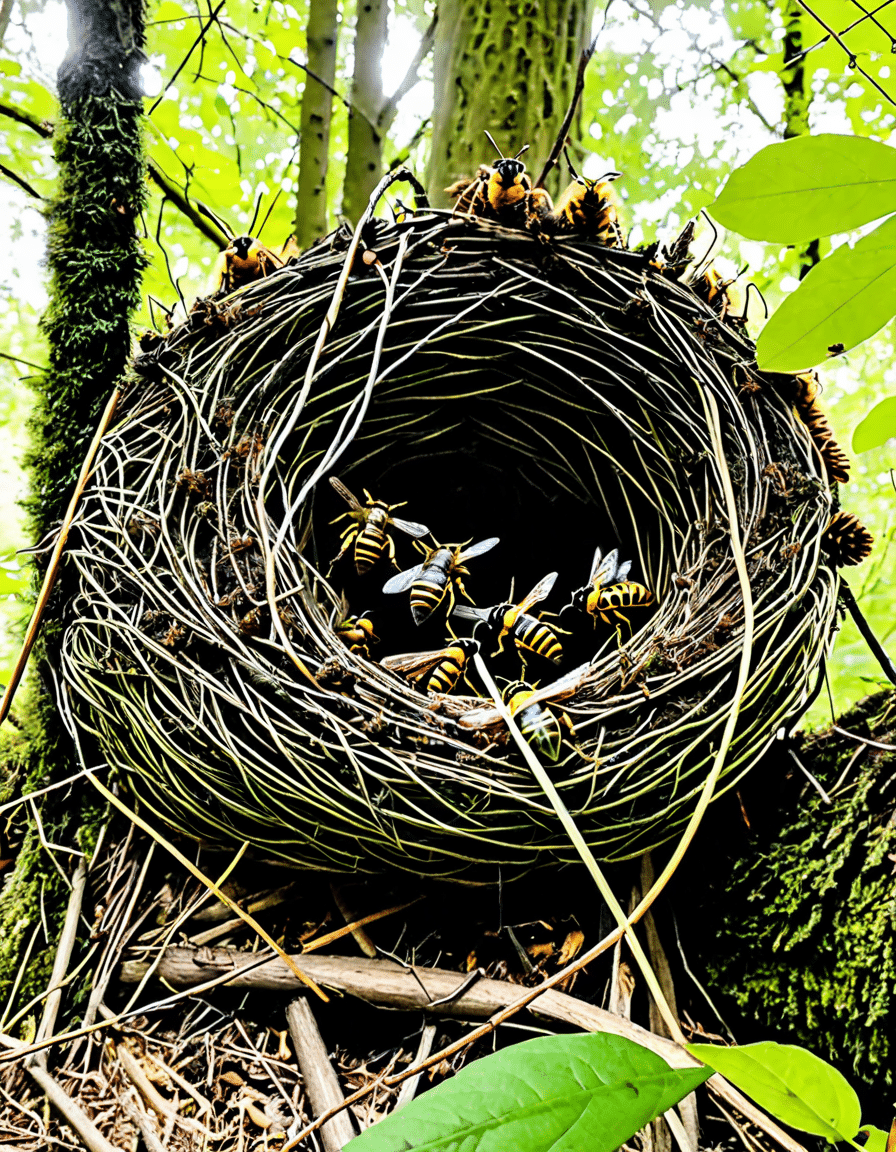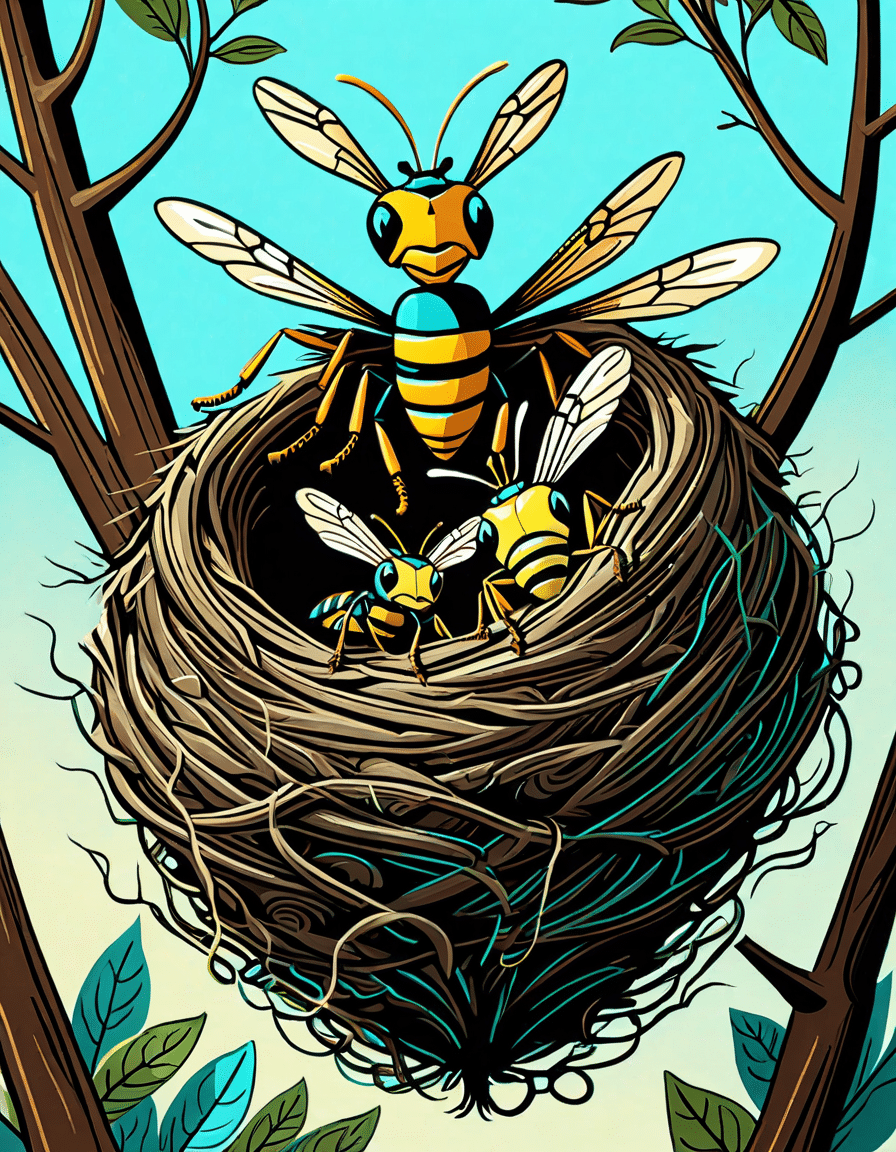Hornets nests often spark fear and curiosity, whispering secrets that lie within the intricate structures of their paper-like material. These natural marvels are more than just the architectural achievements of the insect world; they echo the tenacity and adaptability of hornets themselves. The nests serve a multitude of purposes, showcasing a fascinating blend of engineering, survival, and social behavior that many people overlook. In this article, we’ll dive deep into the world of hornets nests, exploring their unique characteristics and the surprising implications for our ecosystem.
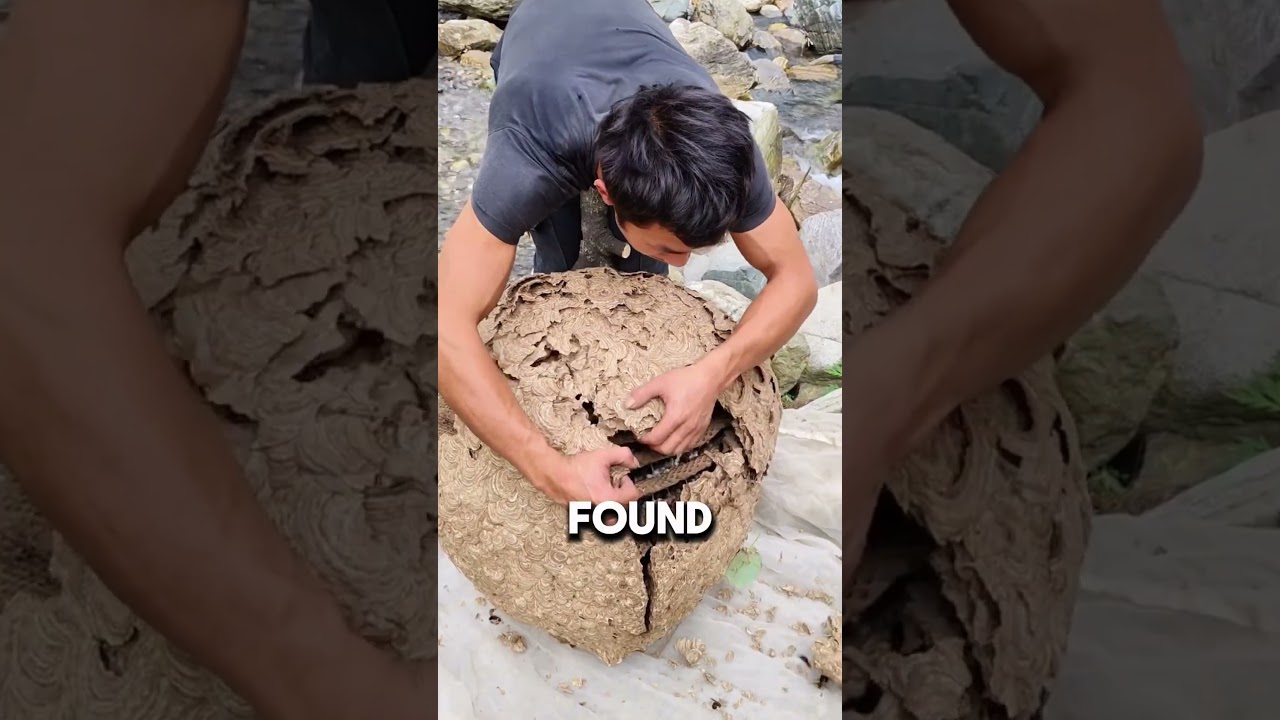
1. What Makes a Hornets Nest Unique?
The Structure of Hornets Nests
When you gaze upon a hornets nest, you might see a simple, round ball hanging from a tree or tucked away under eaves, but it’s so much more than that! Each nest is a marvel of engineering, constructed from chewed wood cellulose, and boasts finely layered designs that protect and support the entire colony. The outermost layer acts as a formidable shield against the elements and predators. Inside, the nest is divided into various chambers, each serving a distinct purpose—from housing the queen and her brood to storing precious food supplies.
Hornets’ nests aren’t all cookie-cutter structures; their size and shape vary based on the species. Picture the common European hornet nest with its intricate, layered design or maybe the colossal Asian giant hornet nest that resembles something out of a sci-fi movie! These adaptations help hornets thrive in different environments, demonstrating their clever responses to ecological challenges. By understanding this structural complexity, researchers can unravel the ecological significance of hornets and their role in the natural world around us.
Importance of Location
Now, here’s something many folks might not realize: hornets carefully choose where they build their nests. They prefer sheltered spots that provide easy access to food sources. You’ll frequently find nests snugly tucked inside tree hollows, attic spaces, or under the eaves of houses. Each of these locations offers advantages like protection from weather disturbances and a strategic lookout for food.
This meticulous site selection isn’t just a fluke; it showcases hornets’ instinctual drive for survival. They understand the risks posed by potential predators and respond accordingly. As we delve into their nesting habits, it becomes clear that these choices reflect their adaptability and resourcefulness. So, the next time you spot a hornets nest, take a moment to appreciate the thought process that went into its location!
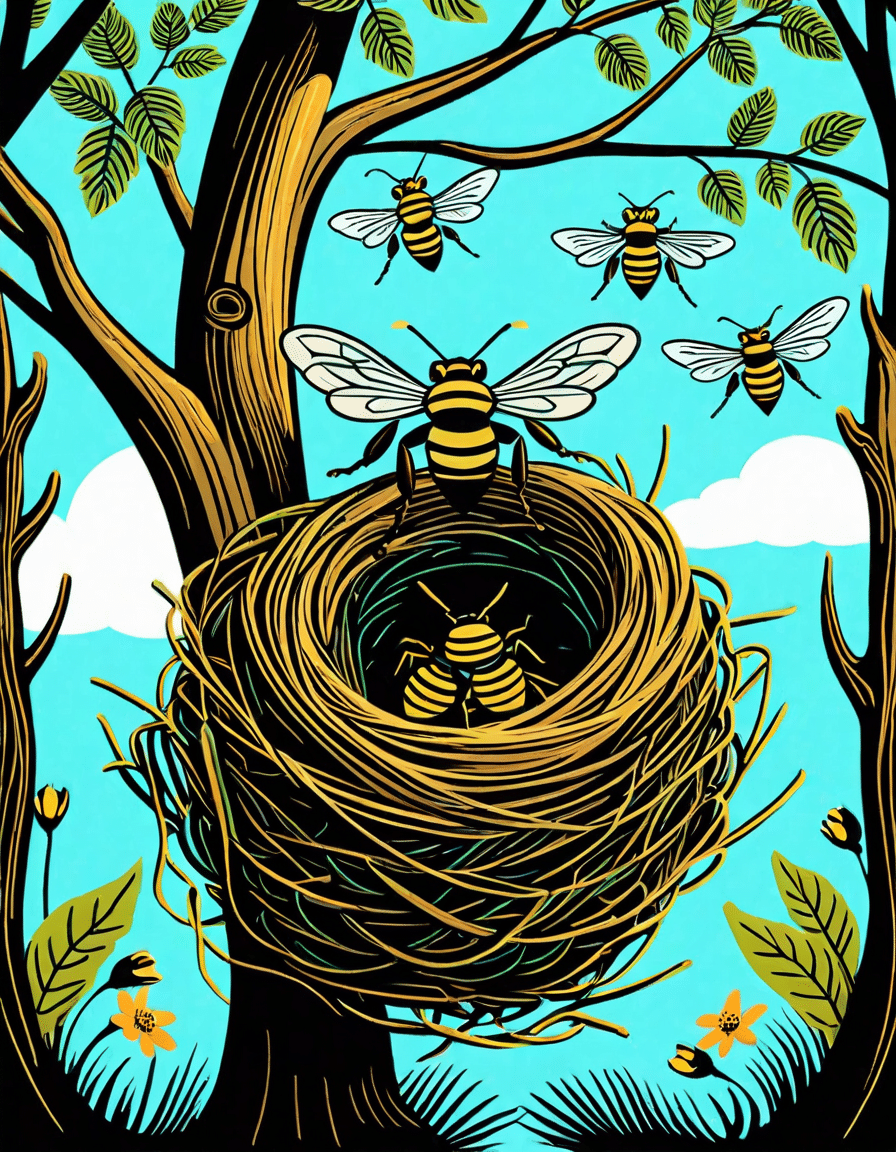
2. Top 5 Hornets Nest Facts You Didn’t Know
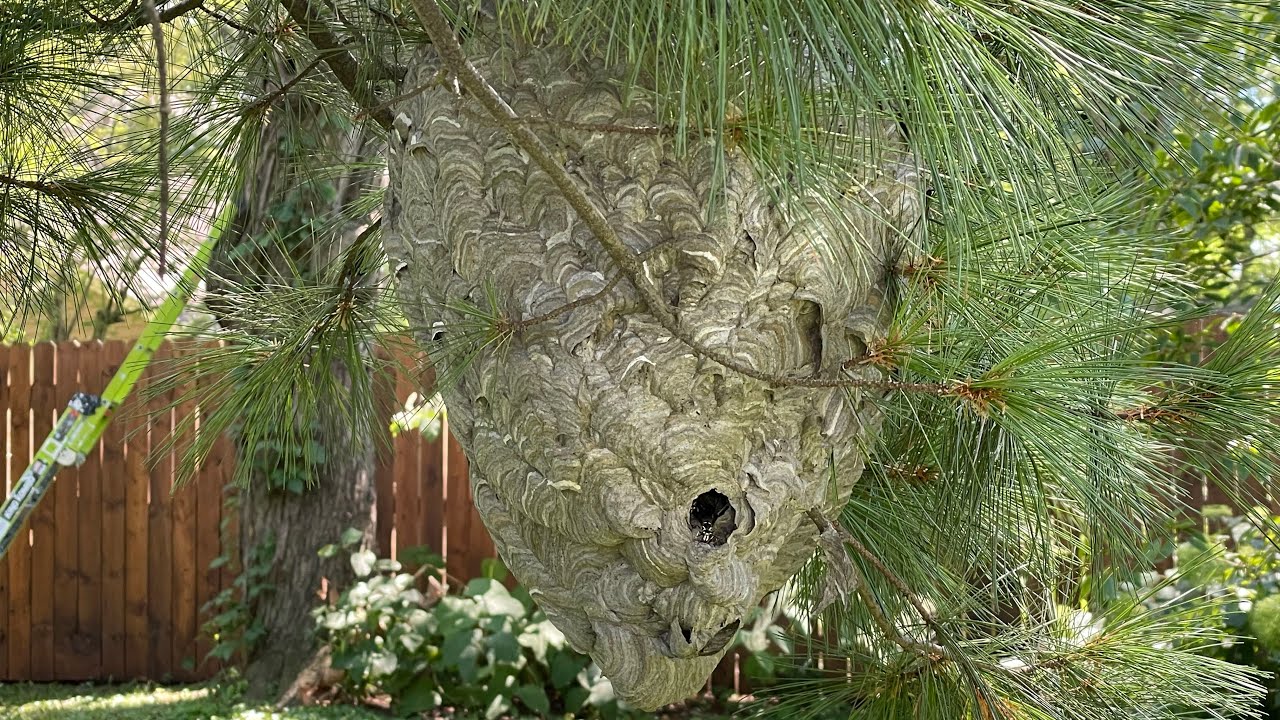
3. The Environmental Impact of Hornets Nests
Hornets are more than mere nuisances; their presence signifies healthy biodiversity in various ecosystems. These tiny architects contribute to pollination and regulate insect populations, acting as natural custodians. Exploring how hornets nest and interact with their environments sheds light on bigger issues, like habitat loss and climate change.
Case Study: The Decline of the Yellow-Legged Hornet
Take, for instance, the yellow-legged hornet, an invasive species in North America threatening local bee populations. Its aggressive hunting habits have sparked concern among researchers and farmers alike. Understanding this hornet’s impact has become crucial as we balance protection for native species with managing invasive threats.
Studying the yellow-legged hornet’s behavior, biologists are working on creating effective control measures to keep our ecosystems intact. This situation highlights the delicate dance between managing non-native species and preserving biodiversity—a challenge that requires concerted effort and innovative strategies.
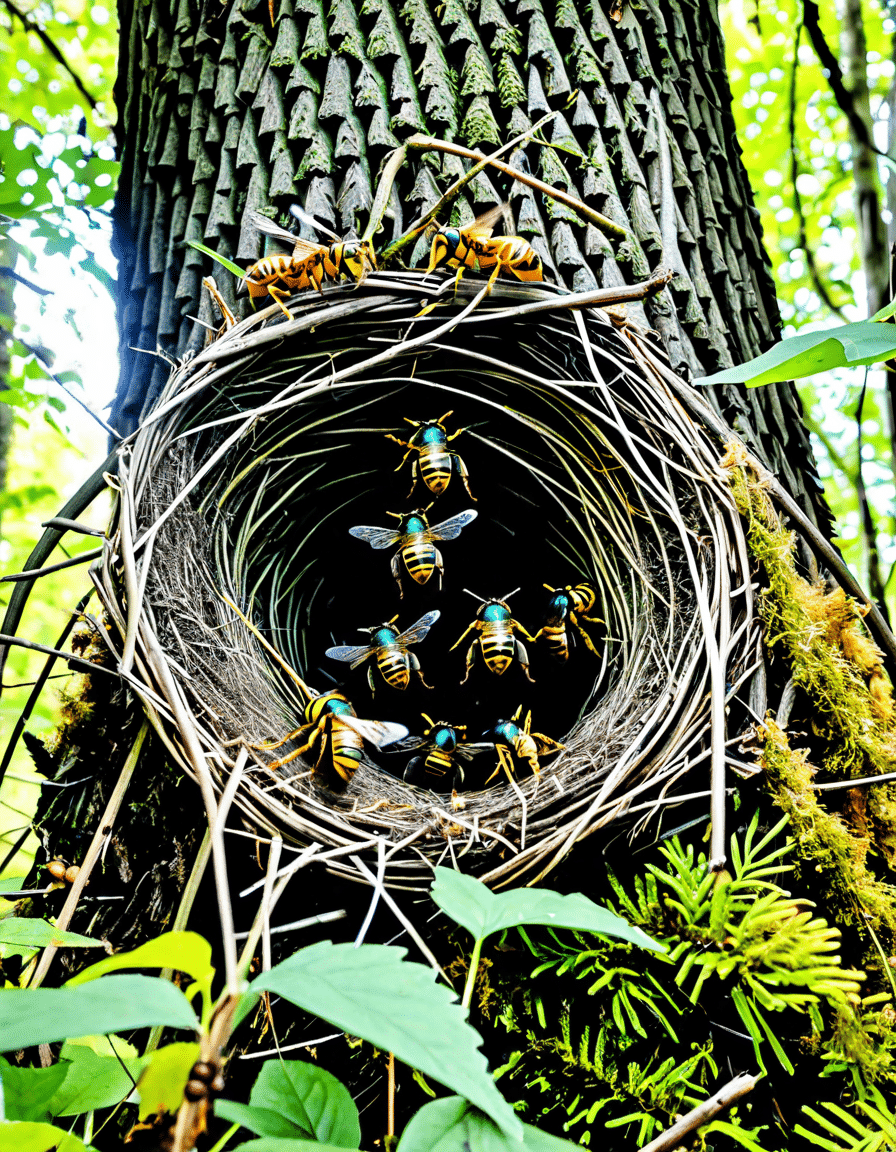
4. Mythbusting: Common Misconceptions about Hornets Nests
The common perception of hornets often breeds unnecessary panic. For instance, while hornets can sting multiple times, this action is typically defensive rather than a mindless attack. Educating the public about these common misconceptions is essential for fostering a more tolerant coexistence.
The Fear Factor
Misunderstandings surrounding hornets can lead to irrational fear and hasty extermination attempts. It’s vital to promote educational initiatives—like local workshops—to teach communities about the benefits of hornets and their curious behavior. By offering insight and statistics, we can help folks understand that these buzzing insects are more crucial than they appear.
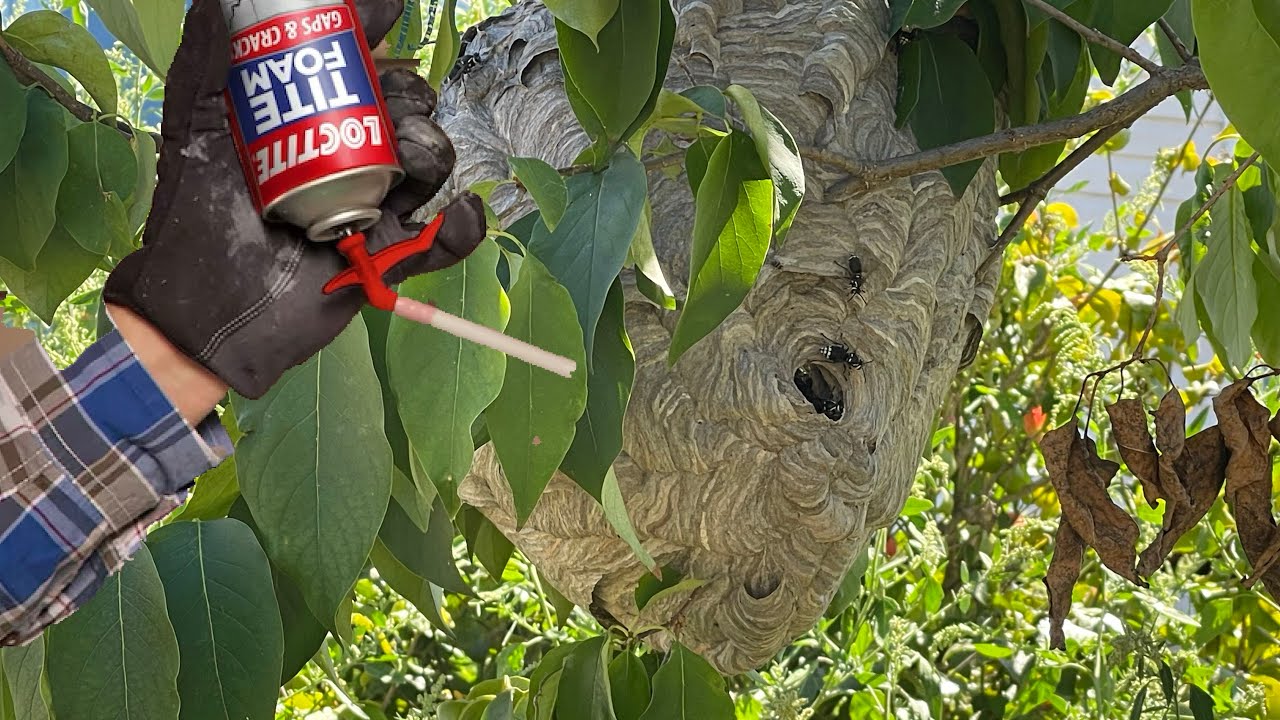
5. Innovative Approaches to Hornet Management
With urban landscapes expanding, innovative hornet management strategies are sorely needed. By integrating hornets into sustainable pest management frameworks, we can achieve fruitful outcomes for both humans and the environment.
Using Technology
Technological advancements like pheromone traps and AI-driven monitoring systems provide non-invasive methods for managing hornet populations. These modern techniques can help maintain balance without compromising public safety, allowing hornets to coexist alongside humans.
Engaging with the World of Hornets
Diving into the world of hornets nests reveals complex behaviors and essential ecological roles. Acknowledging these vital insects opens our eyes to the idea that harmony, rather than destruction, is key to achieving healthier environments. As we come to grips with the importance of hornets, we’ll start shifting our perspectives—from fear to respect—fostering deeper appreciation for nature’s intricate web of life.
In conclusion, embracing knowledge about hornets and their nests isn’t just about pest control; it’s about recognizing the value they bring to our ecosystems. By appreciating their often-underestimated role, we can develop effective management strategies, ensuring a harmonious coexistence that benefits us all.
By opening our eyes to the secrets of hornets nests, we can learn to appreciate the delicate balance of nature and harness that knowledge for a more sustainable future. Don’t forget, in this journey of understanding, we honor the complexity of life surrounding us! From Steve Lawson ‘s insights to checking out Jaicy Elliot ‘s work, let’s continue to explore and celebrate the often-overlooked wonders of the world—like the remarkable hornets nest!
Hornets Nest Secrets That Will Surprise You
The Hidden Wonders of Hornets Nests
Ever stumbled upon a hornets nest and thought, “What’s going on in there?” Well, you’re not alone! The world of hornets is packed with surprises. For instance, did you know that hornets communicate using scents? These little buzzers have a finely tuned sense of smell, enabling them to send messages through pheromones. This helps them organize for hunting or defense, which might come in handy if you’re ever thinking of playing the last man on standing game against them!
But hornets aren’t just about buzz and bite; they’re also artists! Their nests resemble architectural wonders, built with chewed wood fibers mixed with saliva, creating a papery structure that’s unique to their species. Speaking of unique structures, if you’ve ever wanted to learn about other unexpected things like the liver location in the body, you might find it just as fascinating to spot how these nests hang from trees in a perfectly planned shape!
Hornets Nests and Their Strange Habits
Now, let’s dive into their habits. Unlike bees, hornets are quite aggressive when they feel threatened. It’s tricky business when you’re trying to get too close! Interestingly, hornets are known to feed on other insects, making them quite the natural pest control agents. If you’ve got a garden, those hornets could be doing you a solid by keeping the harmful bugs at bay! And if you’ve got questions about a random guy like Braylon Howard, you might find it amusing to notice how even the smallest creatures can hold such big secrets.
Another fun tidbit is that a hornets nest can host up to 700 members, especially in late summer – that’s a small army! This communal living is a testament to their teamwork, which pairs nicely with how different cultures have viewed hornets throughout history. For instance, in folklore, they’re often seen as symbols of hard work and unity, much like a thriving community using an app that is gaining popularity, like cash app download for quick transactions. So next time you see a hornets nest, think about the community within, buzzing away in their busy lives!
Closing Thoughts on Hornets Nests
In wrapping up this wild adventure into hornets nests, consider this: these nests are not just home to hornets. They’re a great story starter at your next gathering! With their fascinating architecture, complex social structures, and natural pest control abilities, hornets are more than just a nuisance. And who knows, you might impress someone with a quirky fact about the next critter or even dive deeper into exciting niches like those explored by influencers like Cadey Mercury! Got more questions? The world of hornets holds so many secrets just waiting to be discovered!
